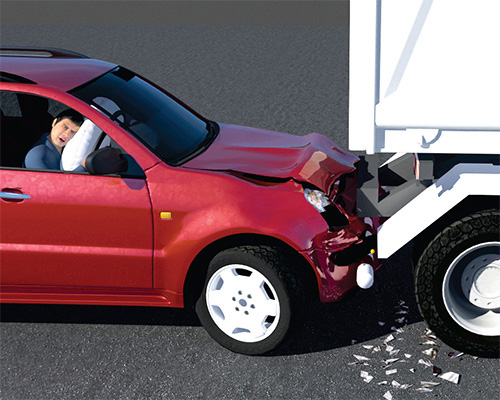Ministry of Highways and Road Transport (MoRTH), government of India has recently banned bull-bars on cars and SUVs with immediate effect throughout the country. It is a wise and technically correct decision to save occupants in any four-wheelers on Indian roads.
Dear friends – please pause and think over – ‘what apparently looks very safe and healthy practice may prove to be a blunder’.
 Let us examine the above step of GoI, banning crash-guard on cars and SUVs. Apparently, it surprises even an intelligent commoner as to why a crash-guard, which is supposed to be a protector, in case of a crash, be banned.
Let us examine the above step of GoI, banning crash-guard on cars and SUVs. Apparently, it surprises even an intelligent commoner as to why a crash-guard, which is supposed to be a protector, in case of a crash, be banned.
But, it is the right move. Let us examine as to how.
One such cautionary advice to all users of technical gadgets and equipment is that the designer of the equipment is in the best position to plan and decide about the configuration, attachments and modification since he has at his command and approach all the requisite information which others do not have. If we, on our own, start deciding about the changes, attachments or removal, there is likely to be a great mistake, even amounting to blunder which may even cost life and well-being.
This is exactly true in case of adding about 50 kg weighing steel crash-guard on the main chassis of the four-wheelers. Leave aside the damage or repercussions on the body, engine, accessories, it jeopardizes the very safety of the driver and passengers.
Visualise the awful situation during crash, either on front or from the back; the vehicle weighing almost a ton with human occupants inside, moving at high speed, say 150-200-250 kms/hr, comes to halt i.e. zero speed within fraction of seconds – exactly in milliseconds. The deceleration is very high, and the high kinetic energy has to be dissipated at tremendous rate – of the material body of vehicle but more importantly the human beings (the driver and the occupants including kids and ladies) whose safety is our prime concern.
Independently and individually (separate for kids, who are not allowed to sit on lap) provided safety belts are one useful safety item to prevent throwing either forward or keeping pressed against the backseat. The limitation here is that safety belt holds the waist and shoulder portion of the human body, but does not or cannot hold head, weighing from 3 to 6 kgs. The neck is likely to crack and the head (skull containing brain-matter, eyes, ears, nose and controller of vital nervous system) shall be badly jolted/ damaged (most of the times beyond recovery).
Scientists and rescue experts have tried hard for long time and an important supplementary safety item namely, airbag has been invented and is in use, which protects, to a reasonable level, the head. It appears on the front, providing air-cushioning. The driver and all passengers push against the bag. This makes the bag deflate, as the gas it contains escapes through the small holes around its edges. By the time the car stops, the bag should have completely deflated.
Such is the plan and design of airbag safety that has successfully helped achieve nearly 25% reduction in fatalities in head-on crashes and by 16% in crashes of all kinds, compared to cars fitted only with manual safety belts.
This is actually a remarkable improvement but it is important to note that deployment of bull-bars or crash-guard on the chassis of the vehicle can prevent the activation, correct and safe opening of the vital airbags. It is so, since the accelerometer (the vital electronic chip sensing the large deceleration in case of crash in microseconds) fails to receive the vital signal of deceleration when the main impact has been transferred to the chassis and not the top frame of car.
The crumple zones of the car or SUVs give drivers and passengers in a vehicle greater protection, in the case of frontal and rear collisions by absorbing the impact of the energy created by the collision and then the effect of the accident is more on the vehicle than on the passengers. Using bull-bars can affect the crumple zone and the overall design of the car.
Second safety disadvantage of bull-bars is to pedestrians who can get injured, even killed when hit directly by it.
Conclusion:
Looking at the above explained disadvantages of bull-bars or crash-guards attached to the chassis, it is quite convincing that Government of India has made the right move by banning them.
A blogpost by Udayan Sharma